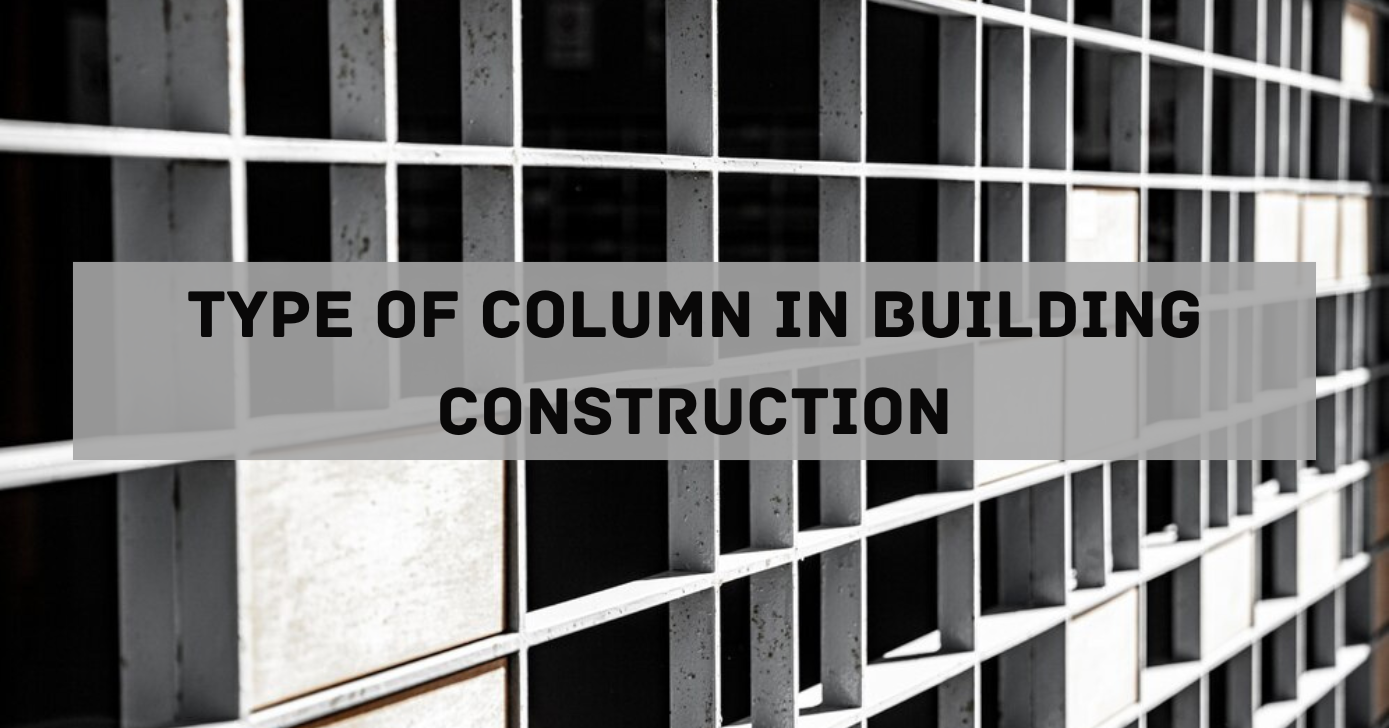There are many distinct kinds of columns that are utilized in various portions of construction. A column is a vertical structural component that primarily supports compression loads. It may distribute the weight from a beam to a floor or foundations, or from a ceiling, floor slab, roof slab, or another slab. The bending moments about one or both of the cross-section axes are frequently present in columns. Various column kinds that are utilized in building construction will be covered in this article.
Columns are categorized depending on a number of factors, including:
Column Types Used in Building Construction
- Depending on the Types of Reinforcement
- Based on Load Types
- Slenderness Ratio-based
- based on Shape
Depending on the Types of Reinforcement
Bound Column
Typically, reinforced concrete is used to create this sort of column. Closely spaced tie reinforcement has longitudinal reinforcement. 95% of all construction columns are thought to be linked.
Spiral Column
Reinforced concrete is also used to make spiral columns. The longitudinal bars of this kind of column is contained within closely spaced, constantly coiled spiral reinforcement. Spiral reinforcement slows axial load failure and offers lateral restraints (Poisson’s effect) (ductile).
Composite Column
A composite column is one that has longitudinal reinforcement in the form of structural steel pipe or sections, either with or without longitudinal bars. This type of column performs well in fires and has a high strength with a relatively small cross-section.
Based on Load Types
Column with Axially Loaded
Axially loaded columns are those that have vertical axial loads that operate on the centre of gravity of the cross-section of the column. Construction seldom uses axially loaded columns because it is impractical to align vertical loads with the cross-sectional centre of gravity of the column. This type of column includes interior columns in multi-story structures with symmetrical loads from floor slabs coming from all directions.
Uni-axial Eccentric Loading in a Column
Uni-axially eccentric loading columns are those whose vertical loads operate eccentrically on either the X or Y axes of the column cross-section rather than parallel to the centre of gravity of the column. Typically, edge columns and other columns firmly attached to a beam only from one side result in columns with uni-axial loading.
Bi-axial Eccentric Loading in a Column
The column is referred to as a bi-axially eccentric loaded column when the vertical on the column does not correspond with the centre of gravity of the column cross-section and does not act on either axis (X or Y axis). Corner columns with securely linked beams at right angles at the top of the columns frequently have columns with bi-axial stress.
Slenderness Ratio-based: –
Columns are divided into the following categories based on slenderness ratio (effective length/least lateral dimension):
Short Column
If the ratio of the column’s effective length to its smallest lateral dimension is less than 12, the column is referred to as being short. A little column collapses by crushing (pure compression failure).
Long Column
If the ratio of the column’s effective length to its smallest lateral dimension is less than 12, the column is referred to as being short. A little column collapses by crushing (pure compression failure).
Read Also: What Is Pile Foundation? Different Types Of Pile Foundation
Based on Shape
Rectangular or Square column
They are typically employed in the building of structures. Rectangular or square columns are simpler to build and cast than circular ones because they are simpler to shutter and support from collapse under pressure while the concrete is still in a flowable state.
Circular Column
They are specifically made columns that are primarily used to support and elevate structures.
L- Shape Column
shaped columns, which share traits with rectangular and square columns, are frequently used at the corners of boundary walls.
T-shaped column
It is used in accordance with a structure’s design specifications. The T-shaped column is a common building material for bridges.
Steel or Iron Column
Steel columns are frequently made in the following shapes: I, channel, equal angle, and T-shape.
Composite Column
Due to its benefits in improving the overall stiffness and stability of the structure, composite columns are a common structural part in the design of high-rise buildings. from: Single- and double-skin tubular structures filled with concrete
Conclusion
You learned so far list of number of types of column, you can choose this according with your requirement. If you have still doubt out types of column in building construction you can Call us on +919911259530.
Till then enjoy the topic.
Read Also: Salary Of Civil Billing Engineer




